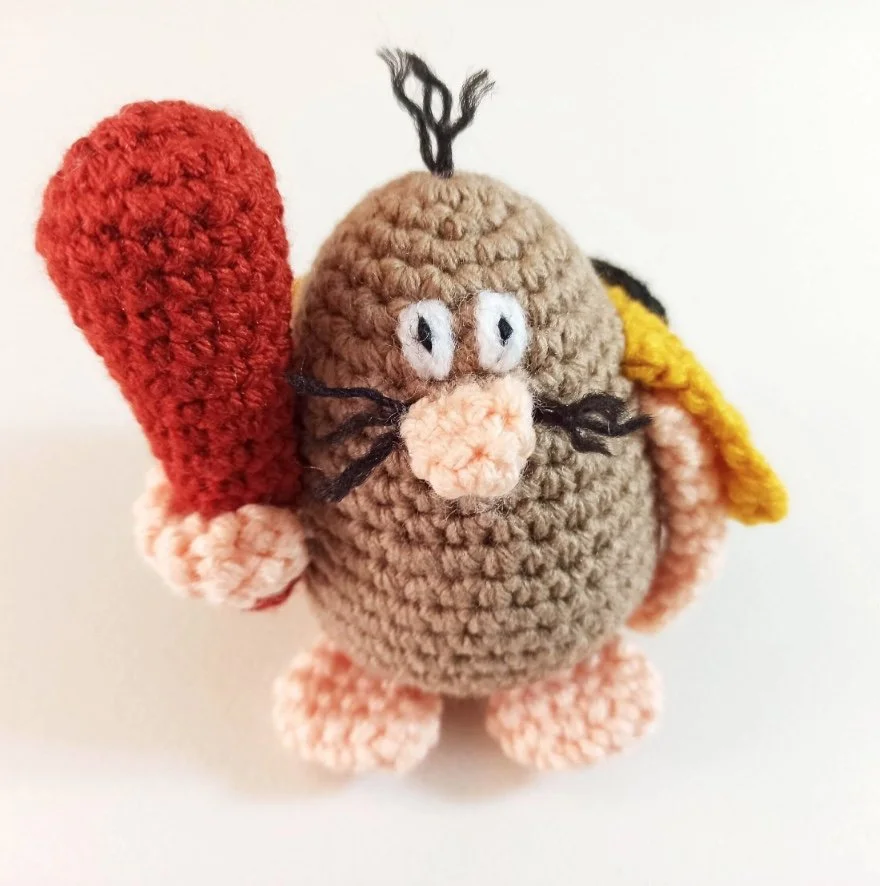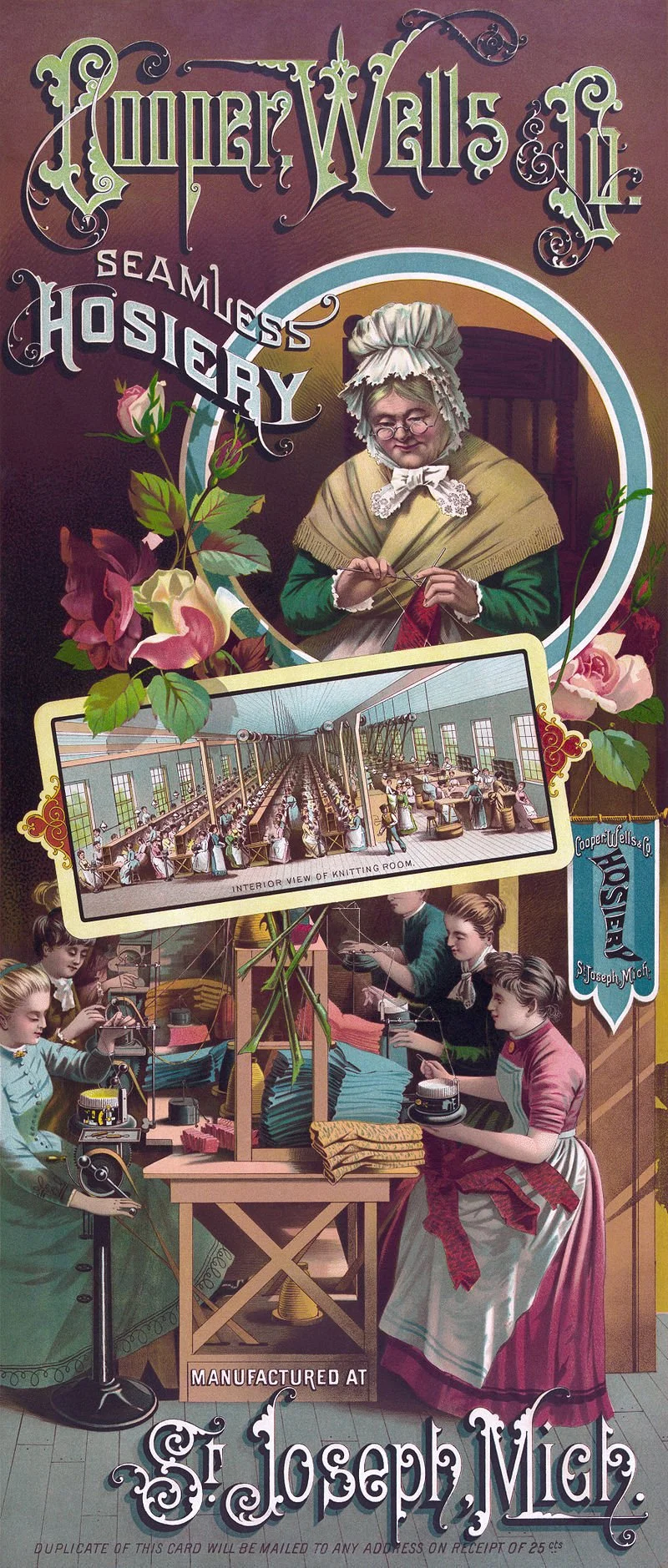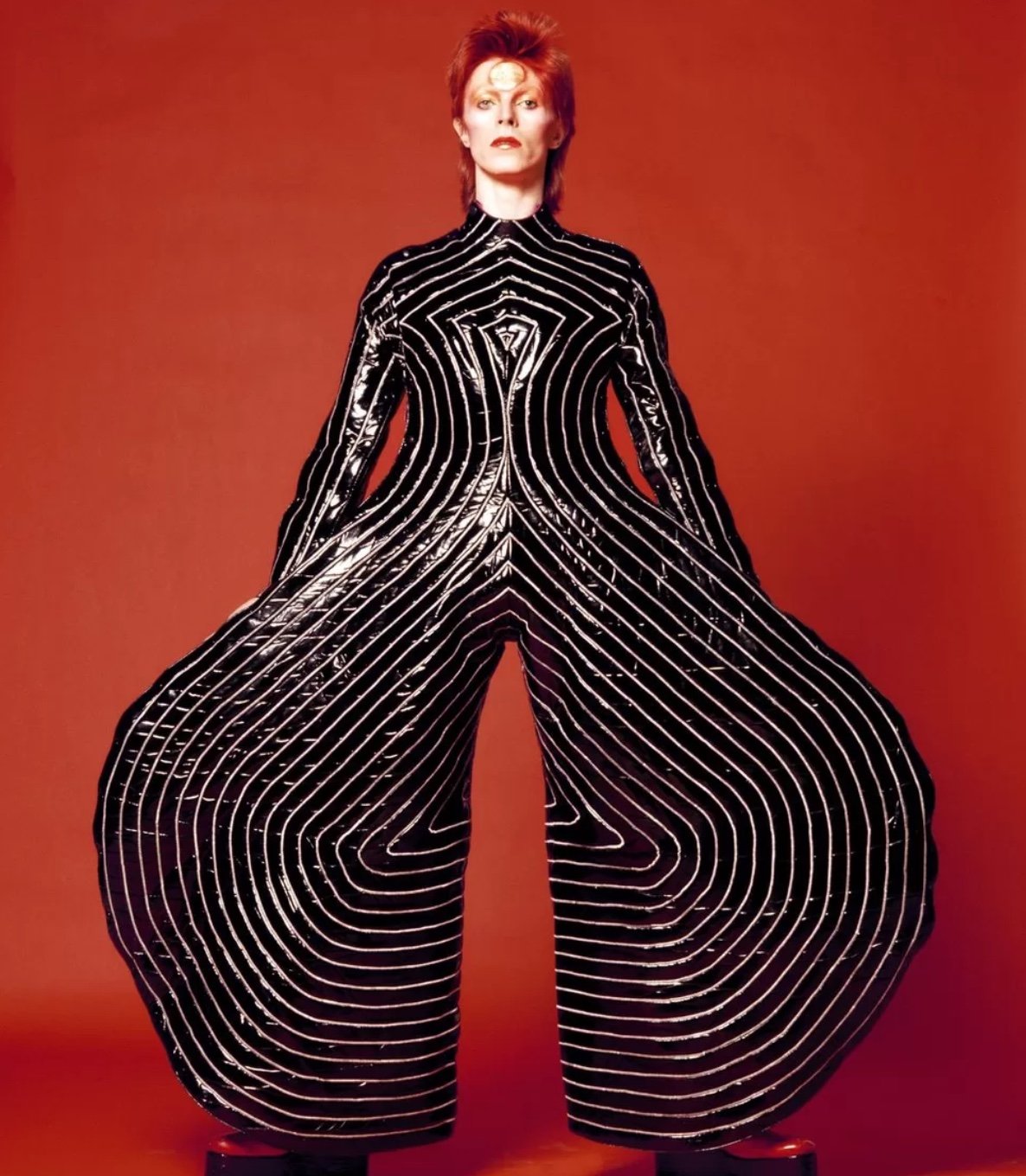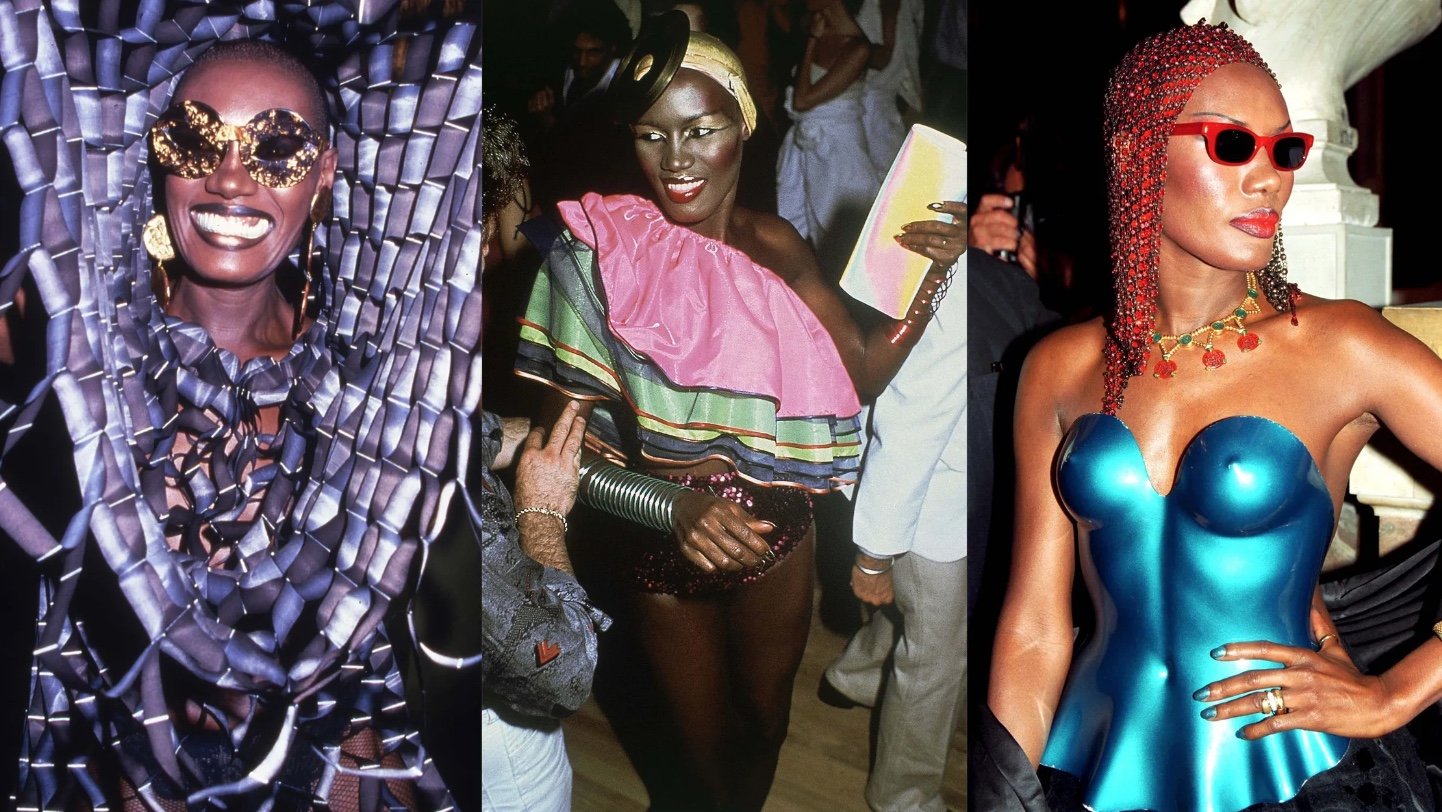… and more
By The Landlord
“After all, the wool of a black sheep is just as warm.” – Ernest Lehman
“My mother was right: When you've got nothing left, all you can do is get into silk underwear and start reading Proust.” – Jane Birkin
“In the summer, in Abbott, Texas, when I was young, I used to work in cotton fields. There were a lot of African-Americans there. A lot of Mexicans - the blacks and the whites and the Mexicans, all out there singing, and it was like an opera in the cotton fields, and I can still hear it in the music that I write and play today.” – Willie Nelson
“Cotton was a force of nature. There's a poetry to it, hoeing and growing cotton.” – BB King
“I wish they'd had electric guitars in cotton fields back in the good old days. A whole lot of things would've been straightened out.” – Jimi Hendrix
But in the beginning, how did it all start? Was it simply … felt?
Not that emotions weren't involved of course, but perhaps it all began, not just with our distant ancestors exposed to cold weather, but also with a random piece of woolly animal coat – sheep, goat, deer or indeed mammoth – snagged on a branch, plucked by human hand, and perhaps soaked in the rain, was accidentally scrunched up a bit or ground by a basic stone tool until it became a pliable, soft, if slightly scratchy material. Felt might indeed be one of the original fabrics, created in the fuzzily felt memory of the Stone Age, stretching far into many other threads of history and society, spun, weaved, or knitted into our lives.
There is even evidence, via an archeological find of 2020, that some of Neanderthal cousins in a region near the Rhône Valley in southern France, created, out of the inner bark of coniferous trees, some kind of yarn into craftily made S-thread and Z-thread cords some 40,000 years ago. Were they used for spinning and weaving into clothing, or at least to sew animal skins together? Quite possibly, and it certainly proves Neanderthals (who also interbred with homo sapiens) had more brains and skills than the cliched brutal caveman image. They may have been into brutally clubbing each other, but perhaps they had sewing and knitting clubs.
Croche clubbing
In the absence of TV or the internet, making textiles is probably humans’ longest ever hobby. The word knitting comes Old English cnyttan, to knot, while the Danish word Nålebinding means "binding with a needle" or "needle-binding, a craft that predated both knitting and croche.
So then, it's time for this potentially long thread of a subject to capture the wonderful weft and warp of songs about all kinds of fabrics natural or otherwise – wool, cotton, hemp, linen, nylon, rayon, muslin, silk, and much more, their clothing, their manufacture and industry, all their darker, and lighter associations. It really is a subject of many interwoven patterns, and there's room for many colourful metaphors too.
These musical and design patterns can move backwards and forwards in time, from the fine knitting (even socks) of Ancient Egypt as long as 11,000 years ago, to the 11th-century Bayoux Tapestry, the fine lace of Estonia, the Faroe Islands, Russian Orenburg, Neolithic wool textiles in the Orkney Islands and Scotland, the Chinese silk trade, the slave-driven cotton industry, India's Varanasi weavers to Maheshwari silk saree makers and beyond.
Denim (dating back to the 17th century Nîmes, France, the term coined from ‘de Nîmes’), perhaps? Chiffon, nylon hosiery, tweed, taffeta, and all kinds of fashion, sexy, crazy, stylish, sweaty, coarse or crafty, which is associated with, or accompanies music and social trends? From basic needle and thread to complex machinery, clothes to curtains, bags and more, fabrics mean many things. We all use them, knotted into our daily lives.
Elvis’s de Nîmes look
As well as the conventional materials, many of which present some of an eco and exploitative disaster, there are some intriguing sustainable alternatives, from cork clothes, shoes and accessories, to Pinatex, made from pineapple, banana fibres, seaweed or lotus silk, recycled plastic fabric. Even stinging nettles (Urtica dioica) have been used. perhaps desperately, during a shortage of cotton and wool, for German Army uniforms during World War I.
Your song suggestions might include incidental cloth material in the colour and detail of lyrics, but hopefully might also pick up the stitches of fabric-based stories. For example, clergymen and inventor William Lee (1563–1614) devised the first stocking frame knitting machine in 1589, and supposedly inspired by an amorous attraction a lover keen on knitting, or because his wife was a very slow at it, he was keen to manufacture at a faster rate and get rich. He took his invention to Queen Elizabeth I. Not impressed by the coarse wool stockings he produced (presumably she tried them on too) she refused his patent, not even when on a second visit, he had increased the number of needles per inch from 8 to 20 and produced a silk of finer texture. Elizabeth's argument was interesting, as much economically as based on fashion taste:
“Thou aimest high, Master Lee. Consider thou what the invention could do to my poor subjects. It would assuredly bring to them ruin by depriving them of employment, thus making them beggars.”
Elizabeth I: ornately dressed but no fan of stockings …
Such a remark certainly does reverberate down the years of the often ruinous fabric and fashion industry. But that didn't stop Lee taking stock, as well as stockings. He pursued this ideas elsewhere. He moved to France with his brother James, taking nine workmen and nine frames and got a patent from the Huguenot Henry IV of France. The Huguenots were definitely into their crafts. It was an interesting road to Rouen, that being the French city, and the rest, as their say, is history, as well as hosiery.
Some hosiery history
On that manufacturing note, and the relationship between the textile industry and society, there are many great films, documentary or features, about fabrics and fashions, but my personal favourite the highly original 1951 Ealing satirical comedy, The Man In The White Suit, starring the flawlessly brilliant besuited Alec Guinness, who plays Sidney Stratton, a clever chemist who ambitiously and obsessively invents an everlasting fibre, which naturally excites, but also upsets the industry apple cart:
Sew much, but sew little time. There are simply too many types of fabrics, materials and famous patterns to unpick here, but any might feature in lyrics. Just to get your further inspired, maybe anything from Aertex, Angora or Argentella; baize, burlap or bobbinet; canvas, cashmere, camel hair or corduroy; damask, denim or dobby; eolienne to faux furs, fishnet, flannel or fustian; gabardine, gauze, gingham or Gore-Tex; haircloth to herringbone, Harris tweed to houndstooth; Intarsia or interlock knits; Jacquard to Jamnasi; lace, lamé, Lycra or leatherette; mesh, moleskin or muslin; nankeen to neoprene; oilskin to ottoman; paduasoy to pongee or poplin; rayon to rinzu; sack or sailcloth to suede or spider silk; tartan to tulle, velour, velvet or Venetian lace; whipcord to Worsted, yak to zibeline or zorbeez. Even these words catch on the needles of the imagination with so many styles and associations.
Here are a few more fabric lovers to inspire you …
Bowie’s knit one …
Him again, in a Kabuki theatre-inspired number by Kansai Yamamoto
Grace Jones of course
Fabric lover Roisin Murphy
So, how will it all knit or sew together? Wearing all this with style, looming over it with musical love, and skilfully manning the jukebox Spinning Jenny, let's welcome back to the big song factory, our very own Tatanka Yotanka! Fabricate your song suggestions into comments below for factory deadline bell to go at 11pm on Monday UK time, for fully manufactured, beautifully finished playlists next week. Sew far, sew good ...
New to comment? It is quick and easy. You just need to login to Disqus once. All is explained in About/FAQs ...
Fancy a turn behind the pumps at The Song Bar? Care to choose a playlist from songs nominated and write something about it? Then feel free to contact The Song Bar here, or try the usual email address. Also please follow us social media: Song Bar Twitter, Song Bar Facebook. Song Bar YouTube, and Song Bar Instagram. Please subscribe, follow and share.
Song Bar is non-profit and is simply about sharing great music. We don’t do clickbait or advertisements. Please make any donation to help keep the Bar running:










